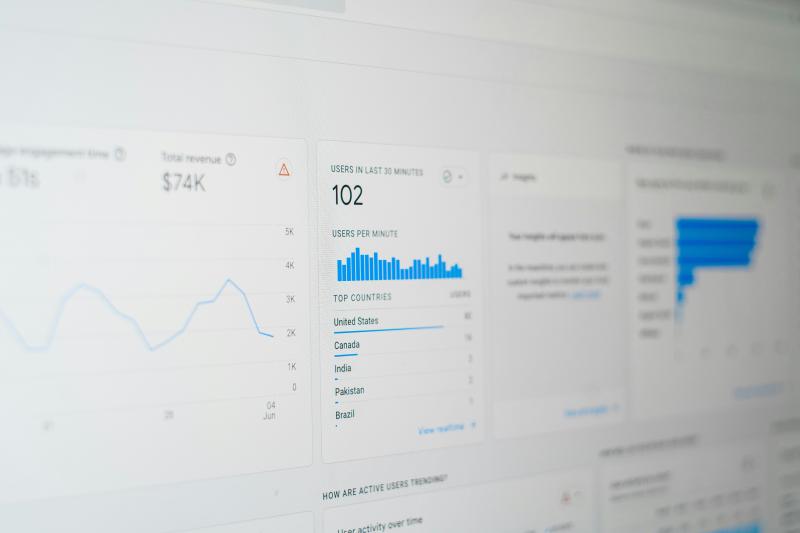Note: As developers of QStars, we are interested in this technology from a technical and research perspective. However, we do not provide any services related to martech or digital advertising. Our focus remains on understanding and exploring these technologies rather than offering them as a product or service.
This blog post is the second installment of a three part series. Today we delve deeper into more technical details of digital advertising and cover the methods to collect data from your users.
Why collect user data?
User data is invaluable for making informed business decisions. By analyzing user interactions on your website or application you are able to identify trends, optimize conversion rates and personalize marketing efforts. Say there is a disproportionate amount of people viewing a product but not purchasing it; you can experiment with different messaging strategies or add social proofs and measure how these changes impact your conversion rates.
Tag Management Systems
As we touched on briefly in the previous blog post, tag managers play a critical role by allowing you to quickly create, update and deploy bundles of code on your website. These systems simplify data collection by having one-click presets and integrations in addition to allowing you to ship your own custom code.
Tag managers usually employ a Data Layer on your website. This javascript object is hidden from end users but acts as a middleman between your website and various analytic tools (such as Google Analytics). Think of the data layer as a centralized repository where all the data your site collects about a user gets stored, making the collection structured and accessible.
Here’s an example of a data layer for tracking an e-commerce purchase.
|
|
With a data layer you are standardizing user behaviour data, making it much easier for your marketing teams to gain insights from it.
Cookie Consent
Privacy regulation like the GDPR and CCPA have significantly altered how a business is allowed to collect and store data about its users. The biggest requirement is having to obtain explicit consent before deploying any tracking cookies or scripts.
Without this consent businesses must only rely on anonymized data, limiting their ability to uniquely identify users and serve them personalized ads. This can also weaken segmentation efforts, making it harder to understand user behavior and preferences.
To address this challenge, many businesses implement cookie consent management platforms (CMPs). These platforms provide users with options to control how much they are tracked while ensuring businesses remain compliant with local regulations. Some CMPs also enable partial tracking capabilities, where anonymized data is collected if full consent is not granted.
A/B Testing
A/B testing is the building block of data-driven working and optimizing your digital marketing efforts. Also known as split testing, it is a method used to compare two or more variations of a webpage, advertisement, or email campaign to determine which one performs better.
By leveraging data collected through tag management systems and analytics tools, businesses can autonomously test elements such as headlines, call-to-action buttons, images, and pricing strategies. This process involves showing different versions of a page or ad to different segments of users and analyzing their interactions to identify the most effective design, messaging, or layout.
The key benefits of A/B testing are:
- Data-driven decision making eliminates the guesswork and validating user preferences with real data.
- Improving conversion rates by identifying the most effective ad copy, design and product pricing variations.
Tag managers allow you to quickly implement A/B tests on your site with the added benefit of it being stored in your data layer. This way businesses can seamlessly analyze results in their analytics platform without any change in your reporting tools.
Predictive Analytics & AI
Beyond A/B tests, businesses can leverage the power of predictive analytics and machine learning to anticipate user behaviour.
Although setting up custom predictive analytics models requires advanced technical expertise, these models can help with:
- User behaviour forecasting: By analyzing historical data, AI models try to predict what users are most likely to convert
- Dynamic creative optimization: Dynamically adjusts website content, product recommendations, and ad creatives based on user patterns
- Fraud detection & risk analysis: Identify patterns that indicate fraudulent activity or purchasing.
Platforms like Google- & Meta Ads heavily rely on machine learning algorithms to enhance their ad delivery targeting, making it crucial that you are sending them data directly collected from your user’s behaviour. Providing high-quality data to these advertising managers significantly increases return on ad spend (ROAS), cost-per-acquisition (CPA) and optimize ad bidding in real-time.
Up next
In today’s post, we explored how businesses can enhance their digital advertising efforts by integrating user data. We covered the importance of tag managers, cookie consent, split testing, and the power of AI.
In the final post of this series, we’ll dive into strategies for maximizing the data you collect from users. We’ll also discuss approaches to handle ad blockers and other methods to minimize the impact of tracking tools on your website’s performance.
